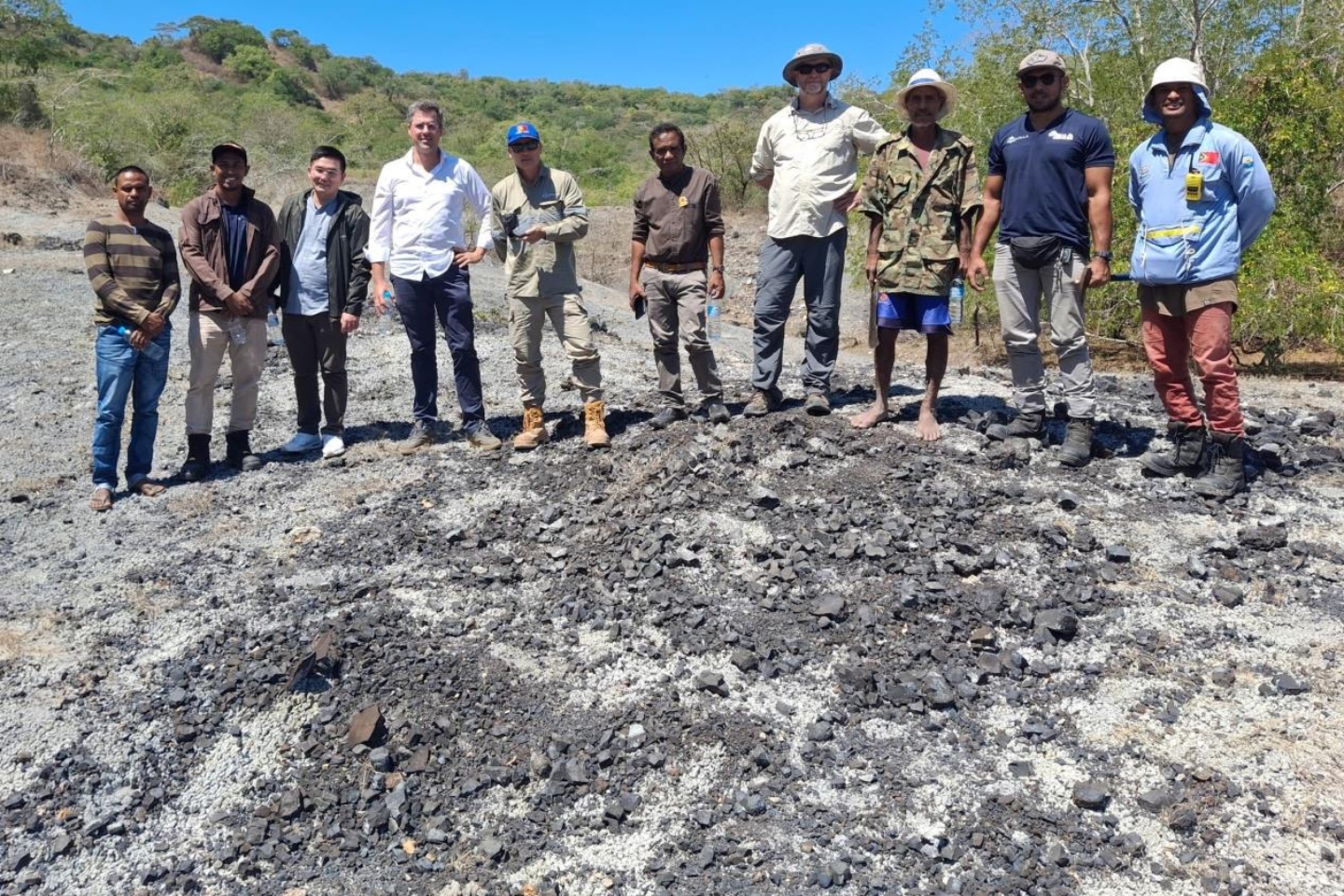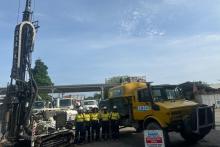Global metals-trading giant Glencore has cast its eye across Estrella Resources’ manganese ground in Timor-Leste, where the latter has unveiled high-grade rock-chip assays hitting up to 57 per cent manganese at its Sica and Lalena prospects in the nation’s Lautém Municipality. The results, which highlight the high-grade nature of manganese mineralisation in the largely untapped region, have marked a major step forward for Estrella’s exploration.

Global metals-trading giant Glencore has cast its eye across Estrella Resources’ manganese ground in Timor-Leste, where the latter has unveiled high-grade rock-chip assays hitting up to 57 per cent manganese at its Sica and Lalena prospects in the nation’s Lautém Municipality.
It seems Estrella’s efforts in Timor-Leste are starting to attract the attention of the industry’s big boys. In particular, the heads of both manganese and nickel trading for Swiss-based Glencore, David Danon and Alexander Chandra, were recent attendees at a site visit, seemingly drawn by the high-grades, potential low-cost production and proximity to the metal’s main market in China.
The results, which highlight the high-grade nature of manganese mineralisation in the relatively unexplored region, have marked a major step forward in Estrella’s exploration efforts. Key findings from the rock-chip assays revealed manganese concentrations ranging from 46 per cent to 57 per cent at the Sica prospect, while Lalena recorded readings of between 19 per cent and 56 per cent.
The mineralisation at both prospects appears to be related to the erosion and enrichment of supergene manganese material, which has provided valuable clues as the company continues to pinpoint future drilling targets in its hunt for the source.
Estrella Resources managing director Chris Daws said: “These results from Sica and Lalena add further weight to our rock-chip discoveries, with a number of these samples first reported as containing anomalous manganese in pXRF results earlier this year. Estrella is entering a very exciting stage where our exploration focus will increasingly intensify on targeting the source of these early-stage rock chip discoveries and hopefully lead to the drill definition of high-grade manganese resources that can be developed.”
Daws also pointed out that extensive work at the company’s newly-acquired Salamari prospect has deepened its understanding of how the supergene manganese enrichment relates to the Noni Formation – the region's predominant geological host. The research has helped clarify the connection between the geological feature and the observed manganese-bearing supergene blankets and will be applied to all future exploration at the project.
Armed with its new working theory, Estrella – using an expanded on-ground team including geophysical and stratigraphic expertise – is now pushing ahead with applications for ground disturbing work and geophysical surveying, with a specific focus on identifying buried supergene blankets that may contain even richer mineral deposits.
With a backdrop of tight supply, the company’s project appears well-timed to be able to fill the gap. Not only is the project brewing to become a high-grade source of material, it lends itself perfectly to a potentially low-cost direct shipping ore (DSO), with easy access to infrastructure already in place and also claims a significant proximity advantage to the main Chinese market over-and-above the world’s other main manganese suppliers in Africa.
googletag.cmd.push(function() { googletag.display('bn-dfp-article-lb2-advert'); });Earlier in the year, disaster struck for one of the world’s biggest manganese producers, South 32, after a cyclone knocked out the company’s main loading infrastructure at Groote Eylandt in Australia’s Northern Territory, causing the commodity’s price to surge from US$3.60 (AU$5.33) a tonne to as high as US$9 (AU$13.33) a tonne.
An enormous amount of money has reportedly already been spent on rectifying the issue, but after nearly seven months of no supply from the mine, the jury is still out on whether the operation will ever be restored to its former glory.
Given that Estrella’s Timor-Leste project represents the first metal operation to be developed under the nation’s new mining code – not involving the country’s richly-endowed petroleum assets – the government is keen to promote the project’s credentials as a template for future mineral plays within its borders.
Highlighting just how important the development is, Daws notes that the company has been invited to speak alongside government officials at the upcoming International Mining and Resources Conference (IMARC) in Sydney in three weeks’ time.
It appears that Estrella – derived from the Spanish word for star – is becoming aptly-named, as the stars start to align for the company and its promising manganese project.
Is your ASX-listed company doing something interesting? Contact: matt.birney@businessnews.com.au
















